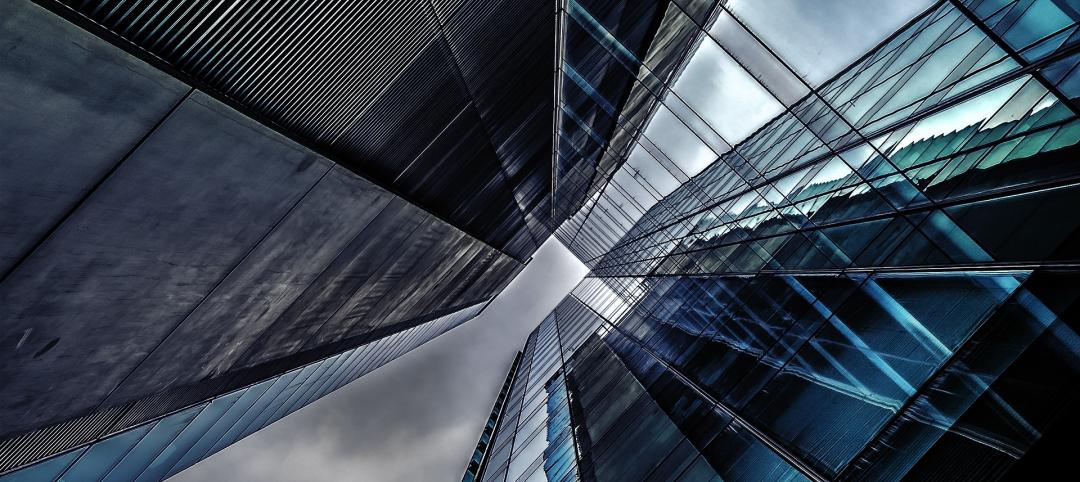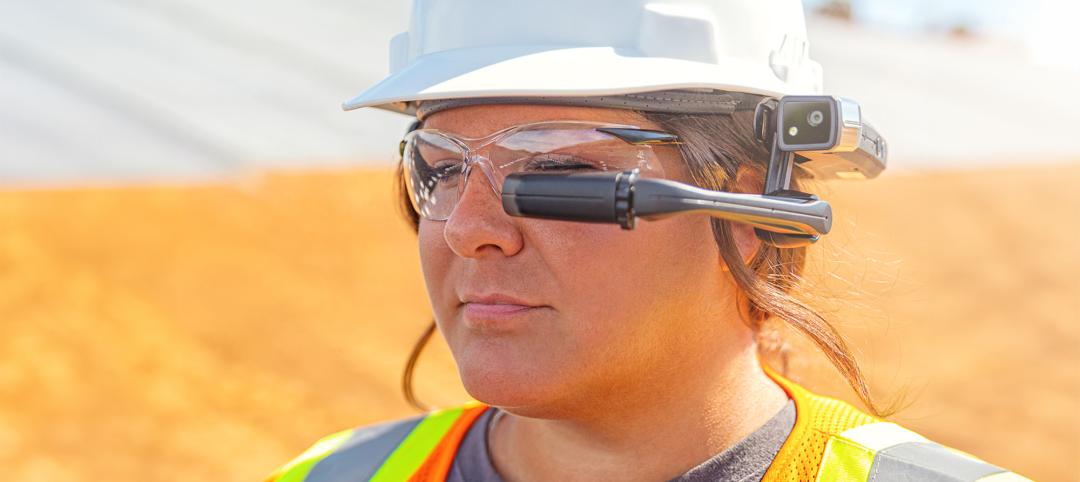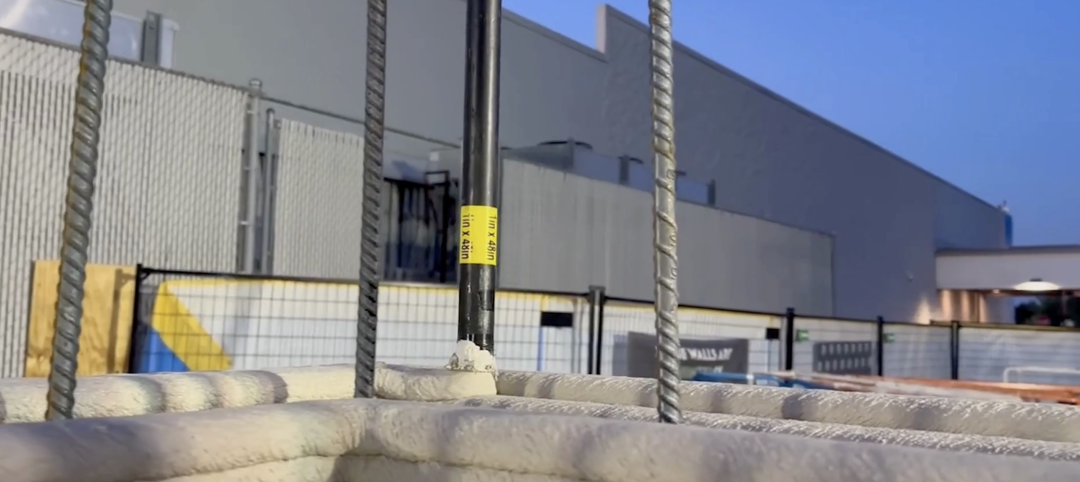Drones can often times be unfairly judged. When people hear the ominous buzzing of a rotary wing drone overhead and look up to see it silhouetted against the sun, it can be easy to hear “Flight of the Valkyries” start playing in your head and think the NSA is coming to get you. And while safety and privacy issues are certainly of concern when it comes to operating drones, what is often times disregarded is just how useful UAVs (unmanned aerial vehicles) can be.
The SkyBEAM (Building Envelope Aerial Mapping) UAV, from Tremco Roofing & Building Maintenance, developed by Industrial SkyWorks, is a perfect example of how a drone can be utilized as a tool for cutting costs and improving workplace safety for certain jobs. The SkyBEAM UAV combines the use of a high-definition camera and a thermographic (infrared) camera to fly around buildings and locate where there may be energy leaks, damage, deterioration, safety issues, or other potential problems. The thermographic camera shows temperature variations around a building that may indicate problems, such as poor or missing window sealing or wet rooftop insulation, so that the issues may be fixed. If not rectified, issues such as these can add up to significant capital expenses, increased operating costs, and occupant discomfort.
This type of infrared scanning is most effective at night when the sun is not warming the building. In the past, technicians would climb the rooftops at night to conduct their infrared scans. Façade inspections meant technicians needed to work from scaffolding or cranes, both of which would lead to added costs and safety concerns. But now, since the SkyBEAM has become the first commercial drone approved by the FAA for nighttime operation, these expenses and safety concerns can be eliminated.
A two-person crew, one of which is a licensed pilot, operates SkyBEAM from the ground. The UAV can fly horizontally across roofs and can reach heights of 400 feet (or about 40 stories) while retaining its flight path in winds up to 25 mph and gusts up to 50 mph. SkyBEAM has a top speed of 25 mph.
Ideal for low-slope roofing and façade diagnostics on multi-building campuses such as educational institutions and healthcare facilities, SkyBEAM’s high-resolution camera can map problem areas of a building such as gaps or tears in the roof, tiny cracks or movement in the façade, and deteriorating concrete.
All of the information from SkyBEAM’s two cameras is then consolidated into a comprehensive, interactive, and easy-to-understand report that can be accessed through a cloud-based application. The software creates a virtual model of the building in 2D and 3D that can be viewed from any angle, be overlaid with thermal images to their exact location, and can have photographs, comments, and other data added in real time through a tablet so technicians can always have the most up to date information. Additionally, data can be transmitted to technicians on the roof so they can always see their location in relation to the problem areas. As technicians walk across the roof, the scan moves with them so they can locate exactly where the work needs to be done.
Drones, despite the surfeit of rules and regulations regarding their use, appear to be in it for the long haul. Many companies are already experimenting with drones as a form of delivery, such as Amazon and Domino’s, and being allowed to fly after sunset would also greatly aid these companies in their visions for how to best utilize UAVs. The FAA projects more than seven million drones may be purchased over the next 15 years, and as their uses grow, such as with the SkyBEAM UAV, that number will likely grow, as well.
Just imagine watching as a drone appears on the horizon carrying your large pepperoni and cheese pizzas. What a time to be alive.
Related Stories
AEC Tech | Oct 16, 2024
How AI can augment the design visualization process
Blog author Tim Beecken, AIA, uses the design of an airport as a case-study for AI’s potential in design visualizations.
3D Printing | Oct 9, 2024
3D-printed construction milestones take shape in Tennessee and Texas
Two notable 3D-printed projects mark milestones in the new construction technique of “printing” structures with specialized concrete. In Athens, Tennessee, Walmart hired Alquist 3D to build a 20-foot-high store expansion, one of the largest freestanding 3D-printed commercial concrete structures in the U.S. In Marfa, Texas, the world’s first 3D-printed hotel is under construction at an existing hotel and campground site.
AEC Tech Innovation | Oct 8, 2024
New ABC technology report examines how AI can enhance efficiency, innovation
The latest annual technology report from Associated Builders and Contractors delves into how artificial intelligence can enhance efficiency and innovation in the construction sector. The report includes a resource guide, a case study, insight papers, and an essay concerning applied uses for AI planning, development, and execution.
AEC Tech | Oct 4, 2024
Publication explores how facility managers can use AI
A new guide, “Gamechanger: A Facility Manager’s Guide to Building a Relationship with AI,” provides a roadmap to understanding and using AI in the built environment.
AEC Tech | Oct 3, 2024
4 ways AI impacts building design beyond dramatic imagery
Kristen Forward, Design Technology Futures Leader, NBBJ, shows four ways the firm is using AI to generate value for its clients.
AEC Tech | Sep 25, 2024
Construction industry report shows increased use of robotics on jobsites
Nearly two-thirds of contractors surveyed, who cited use of robotics on jobsites, are either using monitoring and/or service/labor robotics.
AEC Tech | Sep 24, 2024
Generative AI can bolster innovation in construction industry
Jeff Danley, Associate Technology and Innovation Consultant at Burns & McDonnell, suggests several solutions generative AI could have within the construction industry.
3D Printing | Sep 17, 2024
Alquist 3D and Walmart complete one of the nation’s largest free-standing, 3D-printed commercial structures
Walmart has completed one of the largest free-standing, 3D-printed commercial structures in the US. Alquist 3D printed the almost 8,000-sf, 20-foot-high addition to a Walmart store in Athens, Tenn. The expansion, which will be used for online pickup and delivery, is the first time Walmart has applied 3D printing technology at this scale.
3D Printing | Sep 13, 2024
Swiss researchers develop robotic additive manufacturing method that uses earth-based materials—and not cement
Researchers at ETH Zurich, a university in Switzerland, have developed a new robotic additive manufacturing method to help make the construction industry more sustainable. Unlike concrete 3D printing, the process does not require cement.
AEC Tech | Aug 25, 2024
Are AI opportunities overwhelming design and construction firms?
A new survey of A/E firms found that more than three-fifths of 652 respondents expect AI to improve their operational efficiency. That survey, though, also found that the same portion of respondents wasn’t using AI yet, and two-thirds admitted they were struggling with where and how to apply AI.

















